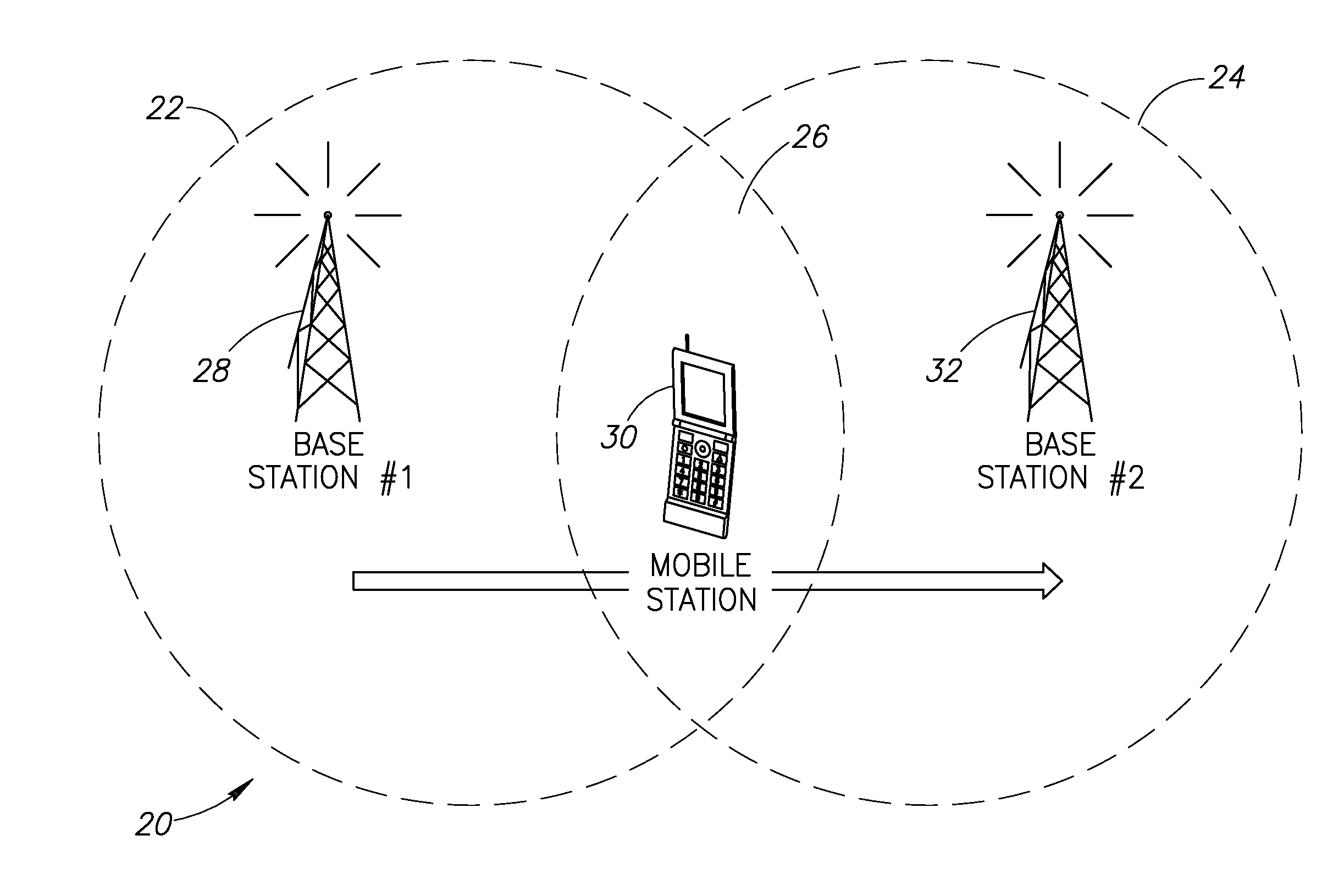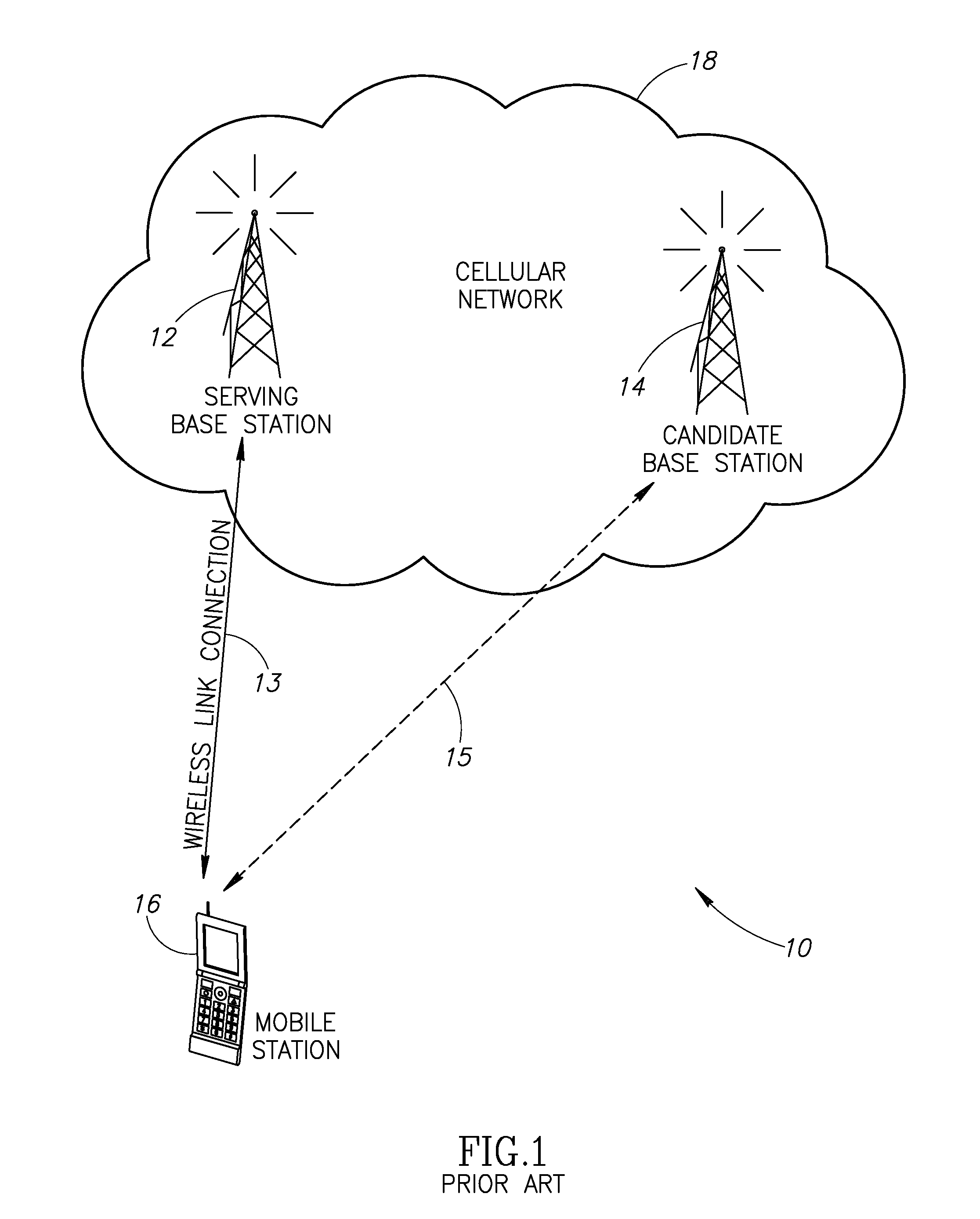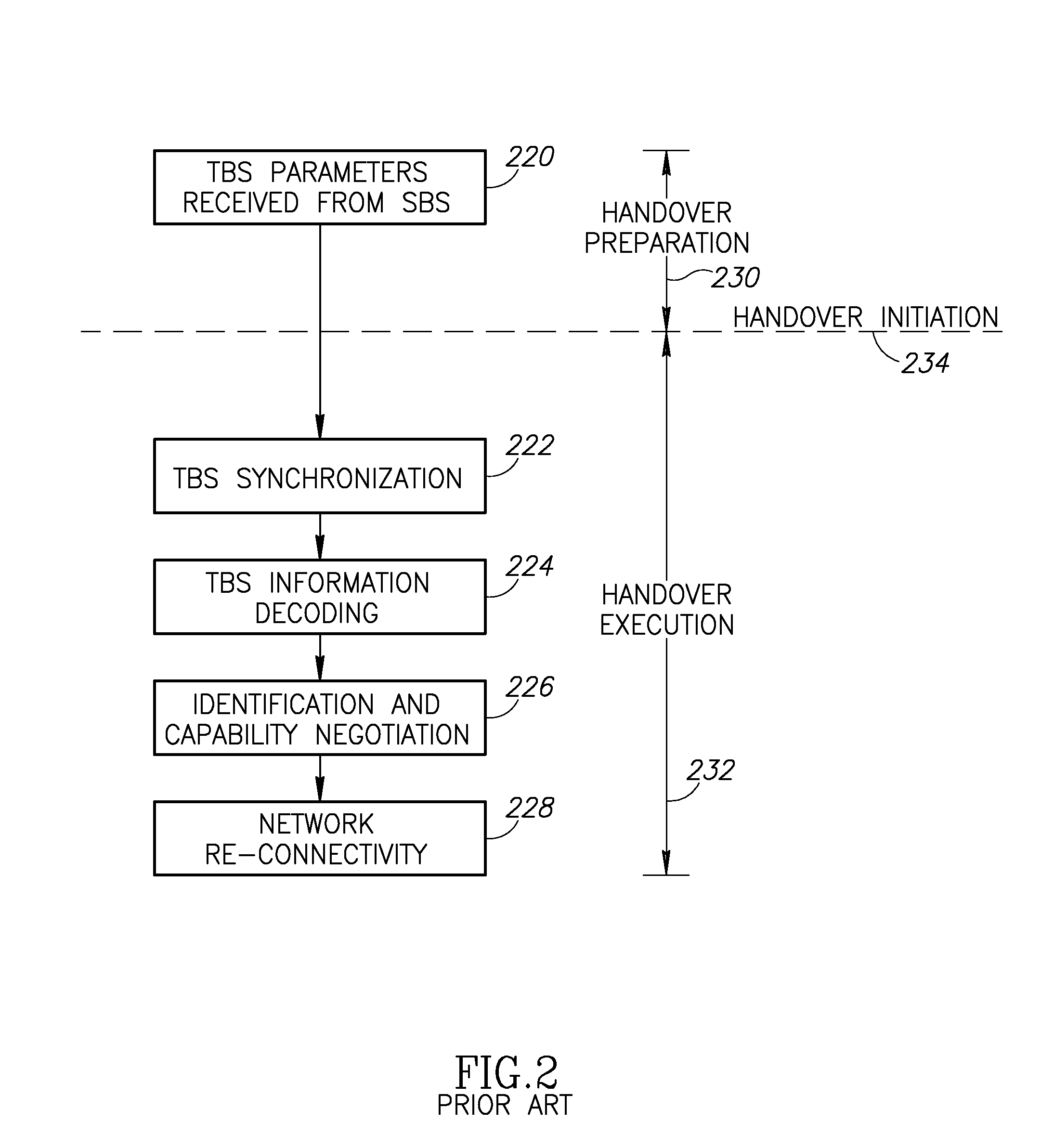Autonomous connectivity between a mobile station and multiple network elements for minimizing service discontinuities during handovers in a wireless communication system
a wireless communication system and mobile station technology, applied in the field of wireless communication systems, can solve the problems of suboptimal handover decision, additional delay, and reduced capacity, and achieve the effect of improving the overall qos and improving the parameter acquisition and selection of target base stations
- Summary
- Abstract
- Description
- Claims
- Application Information
AI Technical Summary
Benefits of technology
Problems solved by technology
Method used
Image
Examples
Embodiment Construction
Notation Used Throughout
[0052]The following notation is used throughout this document.
TermDefinitionABSAnchor Base StationACAlternating CurrentASICApplication Specific Integrated CircuitBABCCH AllocationBBBasebandBCCHBroadcast Control ChannelBLERBlock Error RateBSBase StationBWBandwidthBWABroadband Wireless AccessCCConnection ContextCDMACode Division Multiple AccessCIDConnection IDCNIRCarrier to Interferences and Noise RatioCPCyclic PrefixCPUCentral Processing UnitCQIChannel Quality IndicatorsCTBSCandidate Target Base StationDCDirect CurrentDCDDownlink Channel DescriptorDIUCDownlink Interval Usage CodeDLDownlinkDL-MAPDownlink Medium Access ProtocolEDGEEnhanced Data rates for GSM EvolutionFAForeign AgentFBFrequency BurstFCCHFrequency Correction ChannelFCHframe control headerFDMAFrequency Division Multiple AccessFECForward Error CorrectionFMFrequency ModulationFPGAField Programmable Gate ArrayGPRSGeneral Packet Radio ServiceGPSGlobal Positioning SatelliteGSMGlobal System for Mobile Co...
PUM
 Login to View More
Login to View More Abstract
Description
Claims
Application Information
 Login to View More
Login to View More - R&D
- Intellectual Property
- Life Sciences
- Materials
- Tech Scout
- Unparalleled Data Quality
- Higher Quality Content
- 60% Fewer Hallucinations
Browse by: Latest US Patents, China's latest patents, Technical Efficacy Thesaurus, Application Domain, Technology Topic, Popular Technical Reports.
© 2025 PatSnap. All rights reserved.Legal|Privacy policy|Modern Slavery Act Transparency Statement|Sitemap|About US| Contact US: help@patsnap.com



